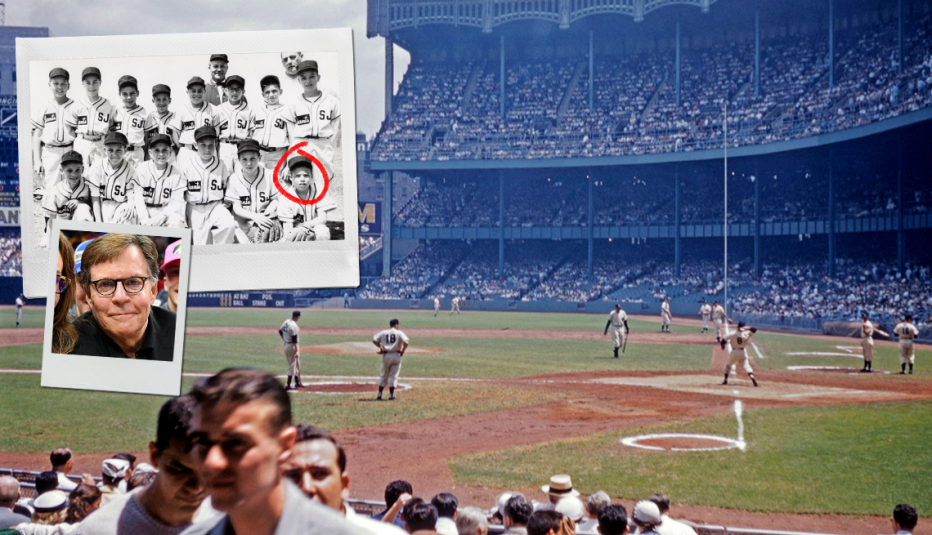Staying Fit


In this moving essay that ran in the May 2023 issue of the AARP Bulletin, Bob Costas reminisces about going to his first major league game with his father.
To appreciate what follows — a boomer’s first vivid recollection of a visit to a major league baseball park — it’s important to understand that post-World War II, and well into the ’60s, the vast majority of ballgames were not televised. And those that were came to us in black and white. We experienced the game primarily through the word pictures painted by classic radio broadcasters. The grainy TV images — no replays, no multiple angles or reaction shots — actually conveyed less of what it might feel like to be at the ballpark than a great radio announcer could. What was missing, most of all, were the colors.
Many fans of a certain age have likened walking for the first time up the tunnel leading to their seats to the moment when Dorothy is transported from black-and-white Kansas to Technicolor Oz. Like entering a different and, for a kid, enchanting world. The emerald green grass, the burnt orange of the infield dirt and outfield warning tracks, the pristine white baselines and outlines of the batter’s box were beyond striking.
In my case, I was 7, and all this flashed before my eyes on a September Saturday in 1959 at Yankee Stadium. Add then to the thrilling sensory overload, the sheer enormity of the place: 461 feet to dead center, 457 to left center, 402 to straightaway left. The triple-decker grandstand, topped off by the distinctive latticework facade. To me, it felt like a baseball cathedral. After all, the House that Ruth Built was then the most awe-inspiring, fabled ballpark. Still, in their own way, millions of kids had essentially the same rush of wonder and delight entering Cincinnati’s Crosley Field, Detroit’s Tiger Stadium, St. Louis’ Sportsman’s Park, Brooklyn’s Ebbets Field, and the Grand Dames of the American and National Leagues, Fenway in Boston and Wrigley in Chicago.
The game was uneventful: Orioles 7, Yanks, 2. Mickey Mantle didn’t play, which temporarily dampened my spirits. But not for long.
It all comes back to me decades later: The seats in the lower left field stands (a buck fifty), the hot dogs (a quarter), the scorecard (a dime and a nickel) and my dad teaching me how to keep score: “No, Bobby, the third baseman is 5. The shortstop is 6. A strikeout is a ‘K.’” Why, Dad? The swirl of cigar smoke, the men in white shirts and fedoras, the vendors’ cries of “Beer here! Ice-cold beer!” My Mantle model glove at the ready in case a 450-foot homer somehow found us. Was there any better place than this? Not to me. Not then.
And then, somehow, it got better. Back in the day, after the game, fans exited the ballpark by way of the field. That’s right. They opened the gates and let you walk on the warning track around the circumference of Yankee Stadium. Holding my dad’s hand, I peered into the Yankee dugout. Empty now except for a few scattered towels and two bats still in the rack. “Mickey Mantle sat there? Yogi Berra! Whitey Ford! And I am this close?” I may actually have been trembling.



































































You Might Also Like
Read the May 2023 Issue of AARP Bulletin
AARP Bulletin shares ways to fix your credit card debtSam Waterston Reflects on the Past, Worries About the Planet
Actor talks climate change, Robert Redford and why being lucky is the best talent of all
10 Quick Questions for Sportscaster Bob Costas
Veteran TV sportscaster covers his favorite Olympics, stand-out interviews, turning 70 and more